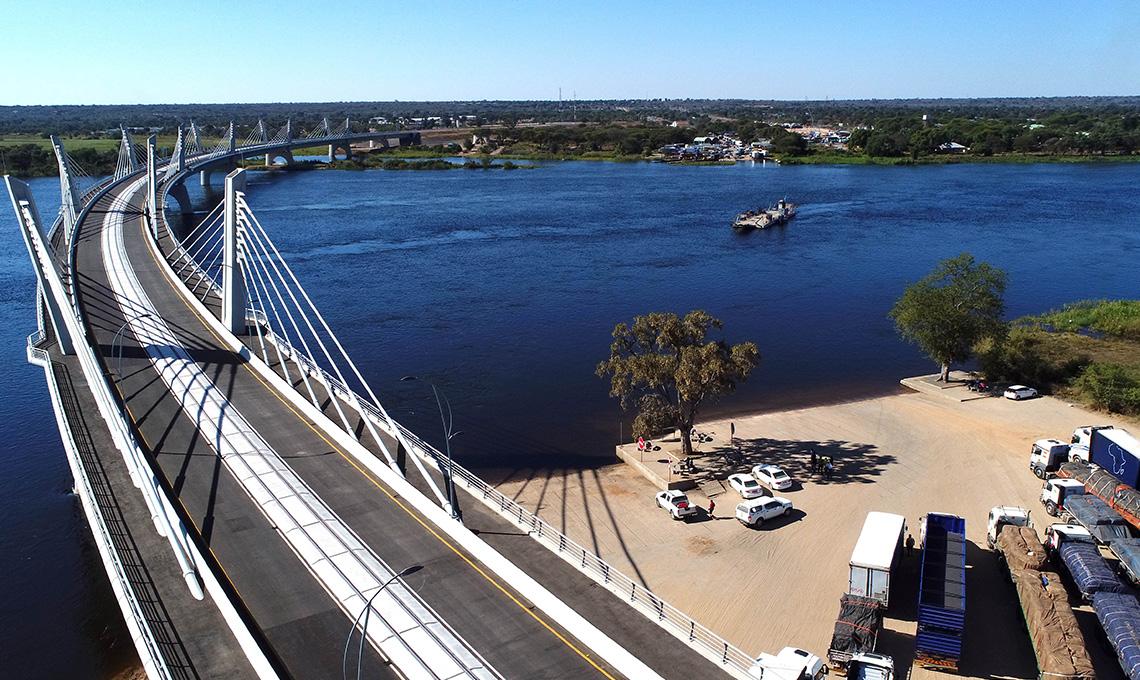Southern African Development Community (SADC) Member States include large countries with large economies, small, isolated economies and island states, and a mix of low- and middle-income countries. Regional infrastructure development creates a larger market and greater economic opportunities, and the development of infrastructure is critical for promoting and sustaining regional economic development, trade and investment, and will contributes to poverty eradication and improved social conditions.
SADC has made significant progress in regional infrastructure development. Infrastructure includes regional transport and communications systems, which are fundamental to cooperation in the SADC region. Energy, water and sanitation, and meteorology are also critical components of regional infrastructure. However, the SADC region faces a number of challenges, including:
- Insufficient energy supply to serve increased production and to extend access.
- Highly priced, unpredictable transport and logistics services, especially for landlocked states.
- Lack of low-cost access to information and communications technologies.
- Inadequate meteorological services for effective and efficient planning and management of water resources, energy production, transport services and other climate-sensitive sectors.
- Unacceptably high number of citizens without access to safe drinking water, adequate sanitation and water for irrigation to improve systems for agricultural production which will contribute to food security.
- Slow response to new tourism trends and opportunities.
Investment in Infrastructure
The World Bank estimates that infrastructure improvements boosted growth in SADC by 1.2 % per capita per year during 1995-2005, mainly from access to mobile telephony. Road network improvements made small growth contributions, while power sector inadequacy had a negative impact. Infrastructure improvements that matched those of Mauritius, the regional leader, could boost regional growth performance by 3 percentage points. Regional infrastructure requirements across all infrastructure sectors represent 1 percent of regional GDP.
Efforts continue to be made to promote private sector participation in the provision of infrastructure in an environmentally sustainable manner. In this regard, the key functions of the Infrastructure and Services Directorate and its affiliated bodies are:
- Promote and monitor the implementation of regional protocols, policies and strategies on energy, transport and communication, tourism and water that contribute to poverty alleviation.
- Development, promotion and harmonization of Energy, Transport and Communications, Tourism and Water policies, strategies, programmes and projects.
- Promotion of an enabling environment for investment in infrastructure.
- Promotion of the development of physical and social infrastructures that contributes to poverty alleviation.
- Coordination and promotion of integrated management of trans-boundary water, tourism, transport and communication and energy resources for regional integration and development.
- Promotion of capacity building and training programmes to enhance regional integration.
- Promotion of stakeholder participation through, among other things, gender mainstreaming and increased private sector investment and input as well as ease of implementation.
Regional Infrastructure Development
Signed at the SADC Summit in August 2012, the Regional Infrastructure Development Master Plan guides development in key infrastructure such as road, rail and ports, and also acts as a framework for planning and cooperation with development partners and the private sector. Infrastructure was also a key component of the Regional Indicative Strategic Development Plan.
The master plan will be implemented over three five-year intervals - short term (2012-2017), medium term (2017-2022) and long term (2022-2027). This is in line with the SADC Vision 2027, a 15-year implementation horizon for forecasting infrastructure requirements in the region. It is also in line with the African Union's Programme for Infrastructure Development in Africa (PIDA) and will constitute a key input into the Inter-Regional Infrastructure Master Plan and proposed tripartite Free Trade Area of SADC, the Common Market for Eastern and Southern Africa (COMESA) and the East African Community (EAC).
The Regional Infrastructure Development Master Plan contains ambitious targets, but the SADC region is embarking on the fundamental task of creating an enabling environment by delivering infrastructure requirements by 2027 in order to facilitate the realisation of sustainable regional socio-economic development and integration within the framework of the SADC Infrastructure Vision 2027.


